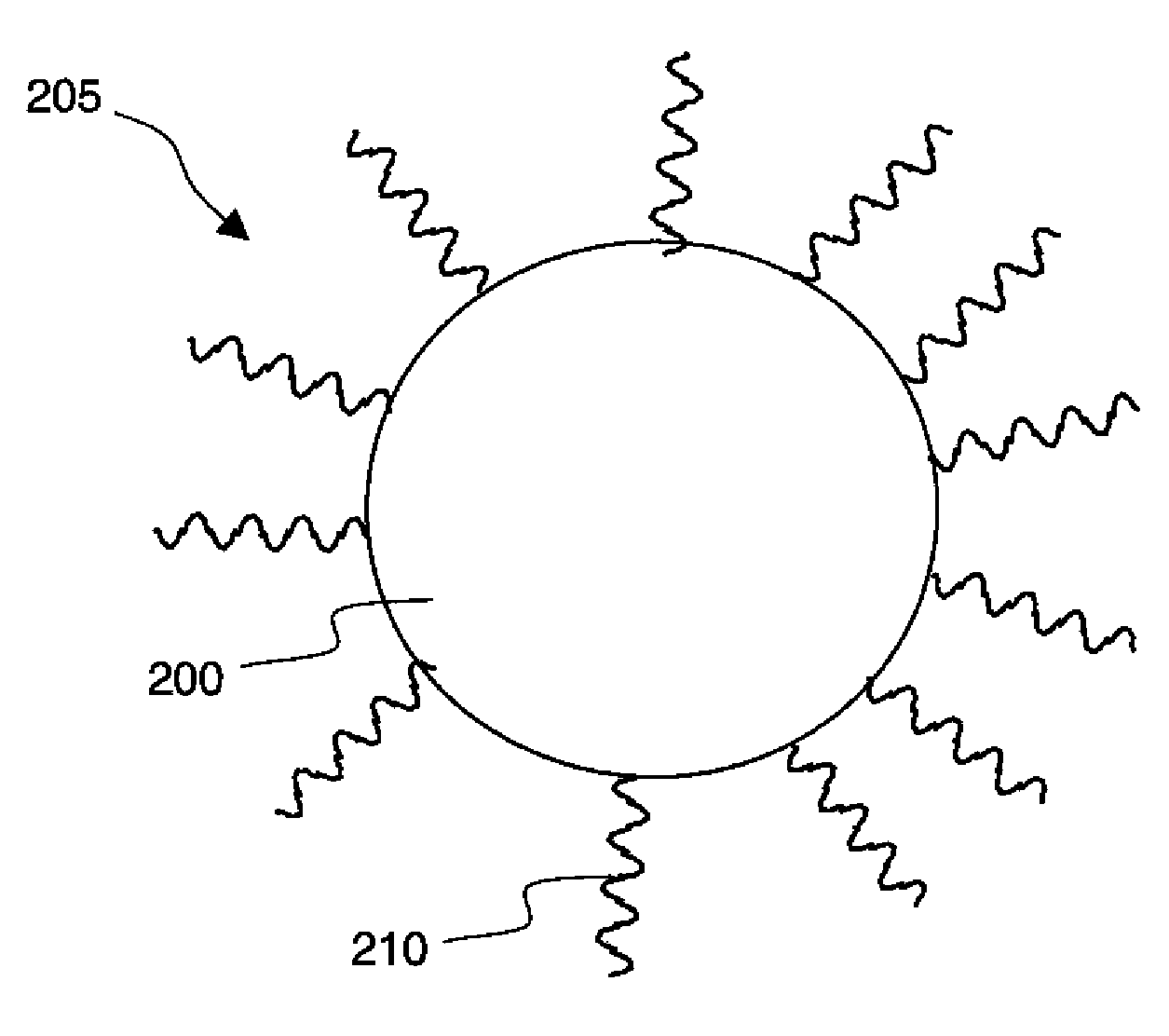Ex-situ doped semiconductor transport layer
a technology of semiconductor transport layer and doped semiconductor, which is applied in the direction of semiconductor devices, crystal growth process, chemistry apparatus and processes, etc., can solve the problems of insufficient device performance for market needs, relatively high cost, and limited efficiency, and achieves low cost, limit the usefulness of these devices, and simple forming method
- Summary
- Abstract
- Description
- Claims
- Application Information
AI Technical Summary
Benefits of technology
Problems solved by technology
Method used
Image
Examples
example 1
[0039]Doped and undoped semiconductor transport layers were formed on glass substrates. The test system was ZnTe, with and without Cu doping (an acceptor for ZnTe which substitutes on the cation site). Undoped ZnTe semiconductor nanoparticles 310 were synthesized by adapting the procedures commonly used to form ZnSe spherical dots (M. A. Hines et al., J. Phys. Chem. B102, 3655 (1998)). More specifically, 4 g of dried and degassed hexadecylamine (HDA) was placed in a three-neck flask and heated, under argon, to 290° C. on a Schlenk line. For the Te precursor, a 0.25 M solution (called TOPTe) of Te in trioctylphosphine (TOP) was formed by heating under vacuum a mixture of Te powder and TOP at 190° C., while vigorously stirring for ˜3-4 hours. The resulting solution was clear and has a green-yellow appearance. In a dry box, a syringe was filled with 0.4 mmol of diethylzinc (from a 1 M diethylzinc in hexane solution), 1.6 mmol of TOPTe, and 2.0 ml of additional TOP. The syringe contents...
PUM
 Login to View More
Login to View More Abstract
Description
Claims
Application Information
 Login to View More
Login to View More - R&D
- Intellectual Property
- Life Sciences
- Materials
- Tech Scout
- Unparalleled Data Quality
- Higher Quality Content
- 60% Fewer Hallucinations
Browse by: Latest US Patents, China's latest patents, Technical Efficacy Thesaurus, Application Domain, Technology Topic, Popular Technical Reports.
© 2025 PatSnap. All rights reserved.Legal|Privacy policy|Modern Slavery Act Transparency Statement|Sitemap|About US| Contact US: help@patsnap.com



